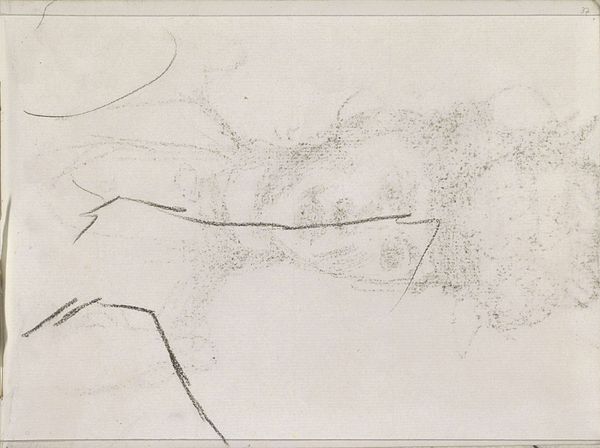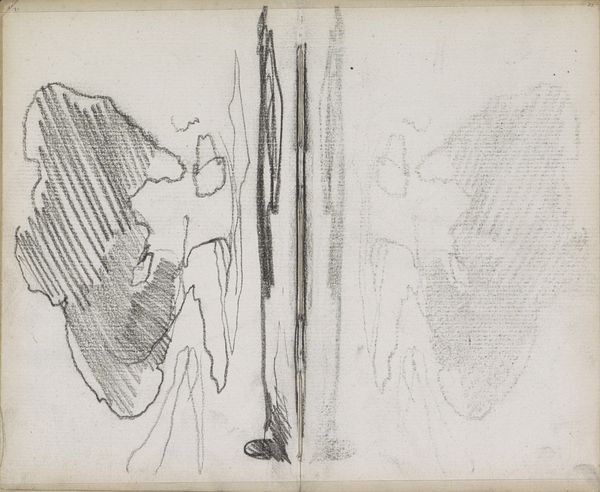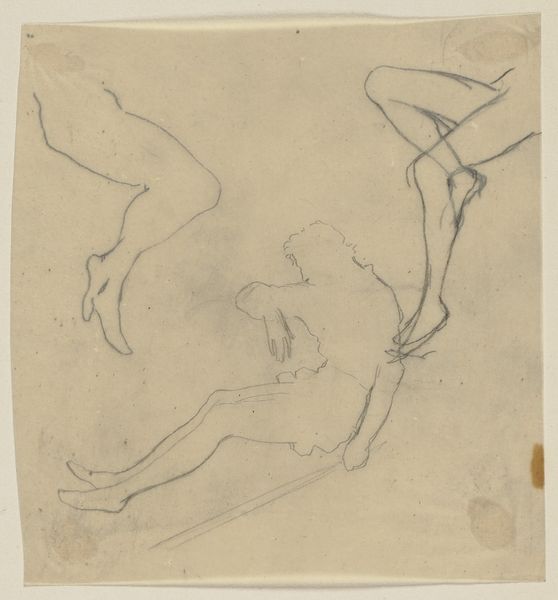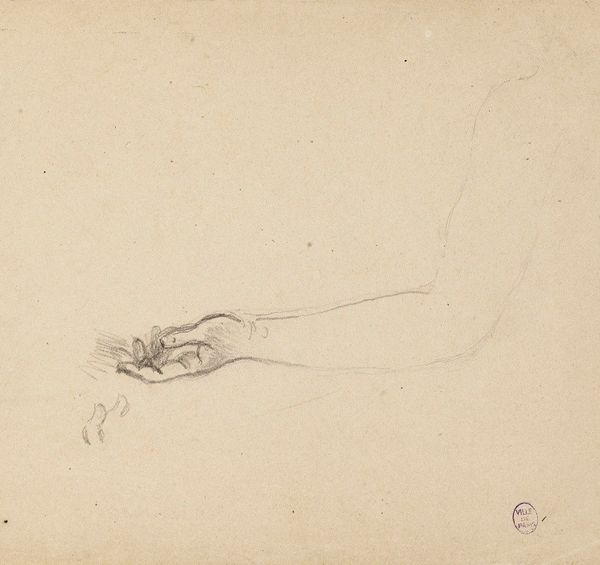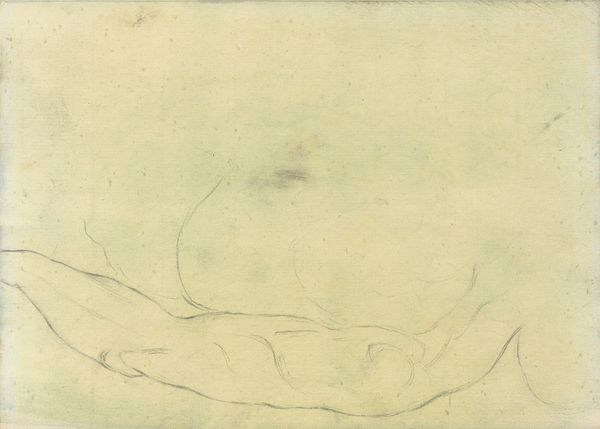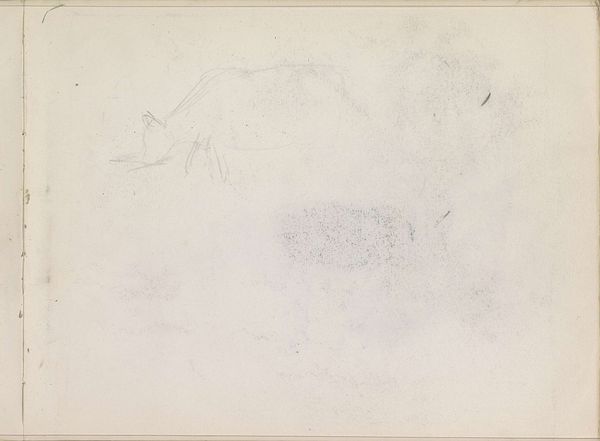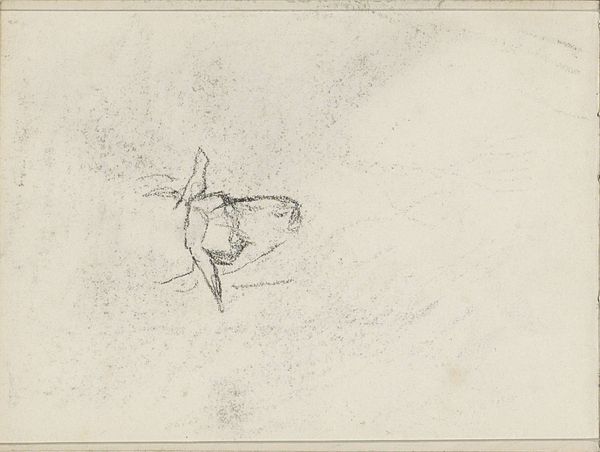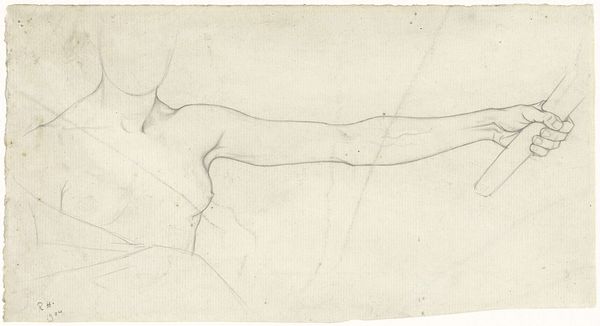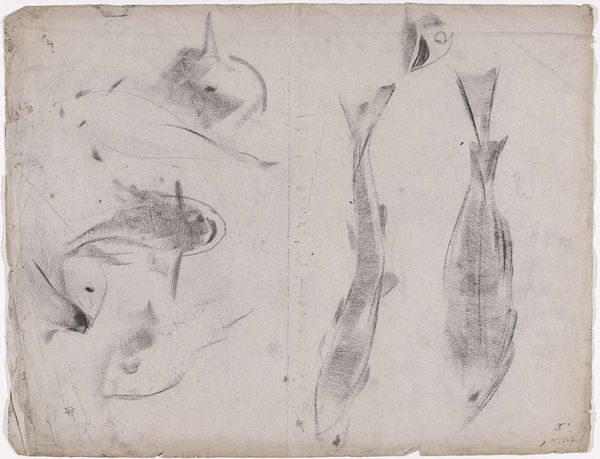
drawing, pencil
#
portrait
#
drawing
#
ink drawing
#
pen sketch
#
pencil sketch
#
figuration
#
pencil
Dimensions: 240 mm (height) x 465 mm (width) (bladmaal)
Editor: This is a study of Christ's outstretched arms, by Joakim Skovgaard, done between 1890 and 1893, rendered in pencil. I’m struck by the vulnerable, almost pleading quality of the gesture, even in this fragmented form. What's your interpretation of this study? Curator: It's fascinating to consider this piece within the context of late 19th-century Danish art and religious sentiment. Skovgaard was working in a period of intense social and religious debate. The historical and cultural pressures would have affected the reception of this religious imagery. Consider, how might this portrayal of Christ's vulnerability play against the backdrop of established church doctrines and the increasing secularization of society at the time? Editor: That’s a really interesting point. It seems the fragility emphasized by the sketch medium itself also becomes very relevant. The incompleteness of it makes me question the representation of power. Do you think the social environment or the institutional patronage shaped Skovgaard’s choice of this specific aspect of Christ to explore? Curator: Absolutely. Skovgaard, despite his deeply held faith, was also engaging with contemporary artistic movements. The focus on a humanized Christ, rather than a divine figure removed from human suffering, speaks volumes. These institutions served not just as display spaces but also as arenas where cultural values were debated and defined. How do you view the use of the study as a piece, not a means, reflecting shifting values? Editor: So the very act of exhibiting the sketch itself challenges traditional expectations, democratizing the artistic process, potentially? Curator: Precisely. It opens the artistic process to a broader public, inviting interpretation. Editor: This conversation really changes how I see the role of both the artist and the institution in shaping the meaning. Curator: Indeed. Examining art through its historical context offers new perspectives on both the work itself and the culture that produced it.
Comments
No comments
Be the first to comment and join the conversation on the ultimate creative platform.



